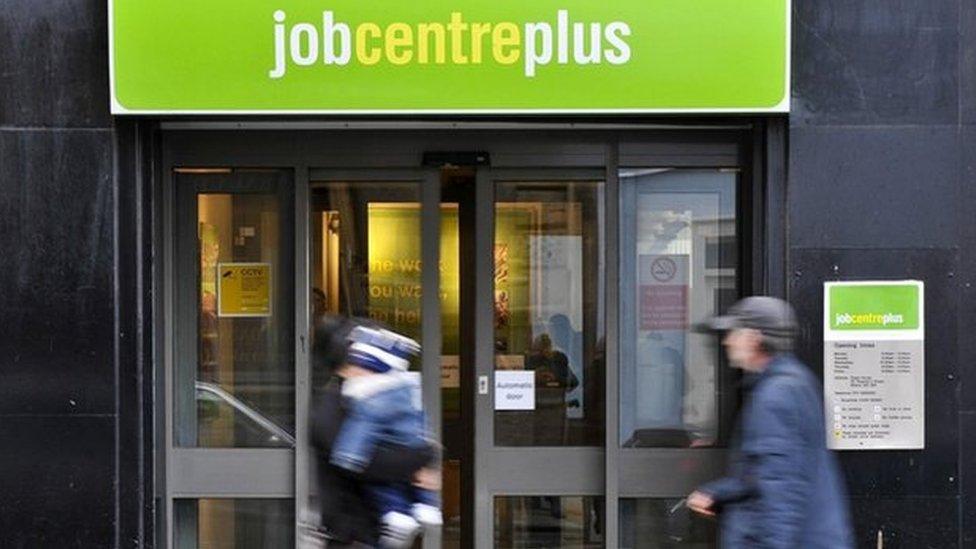News
UK job market weakens: Unemployment rate hits nearly four-year high

The UK’s unemployment rate, as of Tuesday, May 13, 2025, has climbed to its highest point in nearly four years.
This is according to new data from the Office for National Statistics (ONS), reflecting a continuing slowdown in the job market.
The unemployment rate rose to 4.5% in the first quarter of 2025, an increase of 0.2 percentage points from the previous quarter, marking the highest level since summer 2021.
This figure was derived from the ONS’s Labour Force Survey, which has been criticized for low response rates.
However, the ONS reported some improvements in data quality alongside the release.
This rise in unemployment is part of a broader set of labour market indicators released Tuesday, which point to a general cooling of the job market.
The slowdown coincides with recent hikes in employer national insurance contributions (NICs) and an increase in the national living wage.
Job vacancies fell by 5.3% in the three months to April, dropping to 761,000, a figure reportedly 131,000 fewer than a year earlier.
The construction sector saw the steepest drop in openings.
Wage growth has also reportedly eased, with regular earnings rising by 5.6% in the three months to March, down from 5.9% in the previous period, though still high historically.
This moderation in pay growth could reassure the Bank of England’s Monetary Policy Committee (MPC), which recently cut interest rates by 0.25 points to 4.25%.
However, the MPC remains cautious due to persistent wage pressures.
Economist Thomas Pugh of RSM UK noted that while the job market is softening, it’s not collapsing.
He suggested that despite slowing wage growth, MPC members focused on inflation risks may hesitate to approve another rate cut in June.
Another sign of the cooling labour market is the decline in payrolled employment, which dropped by 47,000 (0.2%) between February and March.
Nonetheless, the employment rate remained relatively stable at 75%, according to the Labour Force Survey.
Stephen Evans, CEO of the Learning and Work Institute, observed that the biggest employment losses were in retail and hospitality.
These are supposedly sectors that have also seen rapid wage growth due to the recent minimum wage increase.
He added that it’s unclear whether this represents a longer-term trend or a short-term adjustment.
The rate of economic inactivity, that is, people not in work or seeking work, fell slightly to 21.4%.
But it still remains reportedly elevated compared to pre-pandemic levels, which continues to concern policymakers.
According to The Guardian, the Bank of England is also watching how Rachel Reeves’s £25 billion increase in employer NICs, which took effect last month.
The increase came along with a 6.7% hike in the national living wage, and both are affecting employment and pay dynamics.
Business groups have warned these changes could increase payroll costs.
Michael Stull, managing director at ManpowerGroup UK, said the latest figures reflect the cautious mood among employers, who remain uncertain amid major national and global shifts.
Meanwhile, the ONS is under scrutiny for ongoing issues with data reliability, especially concerning the Labour Force Survey.
National Statistician Ian Diamond resigned last week, citing health reasons, as an independent inquiry into data quality proceeds.
Some impacts of the weakening of UK job market
Sector-Specific impacts
Hospitality sector: This sector has been particularly affected, with a 3.2% employment fall since October, compared to 0.5% across the economy.
This is supposedly due to the rise in employer National Insurance and higher minimum wage.
Small and Medium-Sized Businesses: These businesses may struggle with increased costs, potentially leading to job losses and reduced recruitment.
Social implications
Increased Economic inactivity: A record 2.83 million working-age people are out of work due to long-term sickness, with mental health issues, musculoskeletal pain, and chronic conditions ont he rise.
Reduced Labour Market Participation: The employment rate has fallen by 1.3% over the past 23 months, with employmentfailing to keep pace with population growth.
Policy Implications
Need for supportive policies: The next government should focus on increasing sustainable, good-quality employment, and providing support for those with health issues, rather than introducing arbitrary goals or punitive measures.
Importance of flexible working: Introducing a default right to flexible working and providing better access to occupational health services could help address workforce health issues.
For Diaspora Digital Media Updates click on Whatsapp, or Telegram. For eyewitness accounts/ reports/ articles, write to: citizenreports@diasporadigitalmedia.com. Follow us on X (Fomerly Twitter) or Facebook














